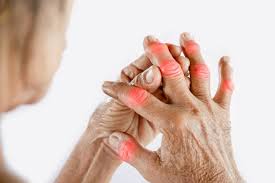Gout Disease: Causes, Symptoms, and Treatment
In the United States, approximately 9.2 million individuals are affected by gout. This disease is quite common among males and older people.
With the help of medicine and healthy lifestyle choices, gout can be treated and managed. The ideal treatment plan for you might be developed with assistance from your physician or dietitian.
Gout Disease is a general term for several ailments brought on by an accumulation of uric acid. Usually, the feet are affected by this accumulation.
In case you have gout, you will have pain and swelling in your feet. This swelling is more particularly in your foot’s big toe. You can feel such that your foot is on fire. In this article, we will go through what gout is, its causes, symptoms, and treatment:
What is Gout?
Gout is a severe form of inflammatory arthritis that causes swelling and joint pain. When uric acid accumulates in your body, this will result in gout.
Your big toe joint is most frequently impacted by gout. However, it can also impact other joints, such as:
- Ankles
- Knees
- Hands and wrists
- Feet
- Elbows
Gout attacks or flare-ups are events where the gout symptoms come and go (recur). Your uric acid levels can be decreased by taking drugs and changing your diet, which will lessen the frequency of future gout attacks.
Types of Gout Disease
Gout is a condition that can be very painful to you, and this disturbs the whole system of your body. There are different types of gout that an individual may face:
Acute Gout
This occurs when uric acid crystals suddenly cause acute inflammation and excruciating pain in a joint. This attack could last for three days to two weeks. These outbreaks, or flares, can be exacerbated by stress and binge drinking.
Asymptomatic Hyperuricemia
High uric acid levels can exist in people with no signs of illness. Increased uric acid levels in the blood can induce “silent” tissue damage, even if people do not need treatment at this time.
A doctor would recommend methods to lessen the accumulation of this acid as a result.
Chronic Tophaceous Gout Disease
This is the most debilitating kind and may cause renal and joint damage that cannot be repaired. At this point, people may experience chronic arthritis and develop tophi in the body’s colder regions, such as the finger joints.
Usually, acute gout attacks are followed by years of chronic tophaceous gout. Gout is less likely to progress to this stage if a person receives effective treatment.
Interval or Intercritical Gout
This is the time between acute gout attacks. These intervals get shorter as gout gets worse. Uric acid crystals may continue to accumulate in tissues in between these times.
Pseudogout
Pseudogout, also known as calcium pyrophosphate deposition, is a simple disorder to confuse with gout. Even though gout flare-ups are typically milder, the gout symptoms are strikingly similar.
The main distinction between gout and pseudogout is that calcium pyrophosphate crystals irritate the joints, not uric acid crystals. Treatments for pseudogout differ from those for gout.
Causes of Gout
Now, a common question comes to mind: what causes gout? Gout is brought on by a buildup of uric acid in the blood, which results from purine breakdown.
Your body overproduces uric acid when you have certain situations, like dehydration or problems with your blood and metabolism.
Your body may have difficulty eliminating extra uric acid if you have a thyroid or renal condition, a genetic illness, or both.
Gout is more likely to develop in you if you:
- Are you a postmenopausal woman or a middle-aged man?
- Drink alcohol.
- Have siblings, parents, or any other family member affected by gout.
- Taking medications such as cyclosporine and diuretics.
- Going through conditions like kidney disease, diabetes, high blood pressure, sleep apnea, or thyroid disease.
Consuming foods high in gout-producing purines can lead to gout in some individuals.

gout disease
Foods to Avoid
Some foods naturally contain a lot of purines, which your body converts to uric acid.
Most people can eat meals high in purines. However, if your body struggles to remove too much uric acid, you should have to stay away from foods like:
- Organ meats
- Red meats
- Some seafood
- Alcohol
Although they do not contain purines, sugar-sweetened foods, beverages, and beverages that include fructose can also be harmful.
Some foods are beneficial if you have gout because they lower the body’s uric acid levels.
Symptoms of Gout
The gout symptoms and signs will appear in an individual suddenly. These signs mostly occur at night. The symptoms include:
- Intense Joint Pain
Mostly, gout affects the big toe, but it can happen at any joint. The wrists, ankles, elbows, fingers, and knees are other joints frequently affected by gout. Within the first four to almost twelve hours, after it starts, an individual will feel pain at its worst.
- Lingering Discomfort
Some joint discomfort may remain from a few days to weeks after the most intense pain disappears. Later episodes are probably more prolonged and likely to involve more joints.
- Redness and Inflammation
Affected joints develop swelling, tenderness, warmth, and redness.
- Limited Range for Movement
You might not be able to move your joints normally when gout worsens.
When Should You See a Healthcare Provider
Call your doctor if you have sudden, severe joint discomfort. Untreated gout can result in deteriorating discomfort and joint damage. If you have a fever and a joint that is hot and inflamed, which could be an infection, seek medical attention right once.
Treatment for Gout
Gouty arthritis, a more intense and severe form of arthritis, can develop if gout is not treated. Your joint may become permanently injured and enlarged due to this excruciating condition.
Depending on the degree and stage of your gout, your doctor will advise a different course of treatment.
Gout medications ease pain and reduce inflammation in one of two methods or stop future attacks by lowering uric acid levels.
Various drugs are used in relieving gout pain. These are:
- Colchicine (Colcrys, Mitigare)
- Nonsteroidal anti-inflammatory drugs (NSAIDs), such as aspirin, ibuprofen (Advil, Motrin), (Bufferin), and naproxen (Aleve)
- Corticosteroids
Different drugs prevent gout attacks. These include:
- Xanthine oxidase inhibitors, such as febuxostat (Uloric) and allopurinol (Lopurin, Zyloprim).
- Probenecid (Probalan)
In addition to prescription drugs, your doctor could advise lifestyle modifications to help you manage your symptoms and lower your risk of future gout attacks. For example, your physician might advise you to:
- Lose weight if you are overweight.
- Decrease alcohol consumption
- Quit smoking

Surgery for Gout Treatment
Surgery is often not necessary to Gout treatment gout. But over time, this condition can harm the tendons, infect the skin around the joints, and damage the joints themselves.
On your joints and in other locations, such as your ear, hard deposits known as tophi can accumulate. These lumps can harm your joints permanently and may be painful and swelling.
Tophi are treated surgically by three methods:
- Joint fusion surgery
- Tophi removal surgery
- Joint replacement surgery
The severity of the damage, the location of the tophi, and your personal preferences will all influence whatever surgery your healthcare provider suggests.
How is Biologic Infusion Treatment Effective in Gout Treatment?
Biologic Infusion therapy is an effective treatment option for treating gout attacks. To provide biologically engineered drugs during biologic infusion therapy, an IV line is inserted into an arm vein.
It can be used to treat the signs and symptoms of an ongoing gout attack and lessen the chance of subsequent flare-ups and/or complications, like getting tophus.
Orally administered medications must pass through your digestive system before you feel their therapeutic effects.
Since the medication is put directly into a vein during infusion therapy, it enters your bloodstream right away. This offers a quicker onset of relief and a higher rate of absorption.
FAQs about Gout Disease
What is the fastest way to get rid of gout?
The accumulation of urate, which results in the formation of uric acid crystals that accumulate in your joints and cause swelling and pain, can be flushed out by drinking plenty of water.
According to recent research, drinking enough water in the 24 hours prior to a gout flare will lessen the severity and frequency of gout attacks.
What is the most popular medication for gout?
One of the most popular medications for gout is allopurinol. Allopurinol is a medication for those who make excessive amounts of uric acid. It is the most widely used medication for the treatment of chronic gout.
Contact Fuse Infusion for Treating Gout Symptoms
Infusion treatment is one of the treatment options for gout symptoms/ The good news is that Fuse Infusion provides infusion therapy close to you.
A biologic infusion treatment facility, Fuse Infusion, provides biologic infusion therapy and other treatments to help people recover from chronic illnesses. Our facility employs skilled and knowledgeable personnel.
You will receive care in a secure setting. To learn more, call us at 914-460-4891 right away! or visit Fuse Infusion

